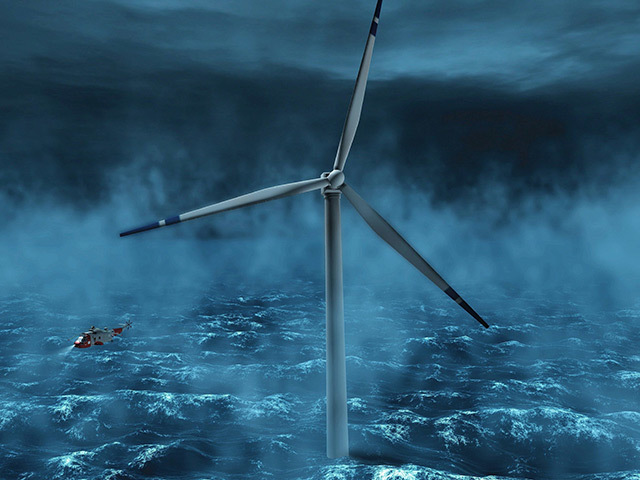
As key members of the offshore wind industry gather in Glasgow this week for the All-Energy Conference, there should be plenty of grounds for optimism. The industry is already delivering on its promises. By 2020 our sector will have delivered 10GW of installed capacity, providing clean and green electricity for 8 million homes. Over £30 billion of private sector capital will have been deployed, supporting thousands of high quality jobs and creating economic activity and opportunity in industrial towns and coastal communities around the country.
And the good news looks set to continue, because whichever way you look at the UK energy sector, offshore wind has a big role to play. The UK needs to rebuild around 50% of its electricity generating infrastructure by the middle of the next decade and invest £100 billion in doing so. Most commentators agree that we need a mix of low carbon generation types – nuclear, gas and renewables. But nuclear plants will struggle to be ready in time for 2025 at the quantities needed. Gas plants should be ready in time, but being over reliant on gas would expose the UK market to volatile wholesale markets.
This means renewables has a huge role to play. However, for various technical and political reasons, it seems difficult to imagine onshore renewables reaching the scale we need by 2025 in order to keep the lights on. Which is why we must turn our attention to offshore wind. Of all of these technologies, offshore wind is the only one that is clean, green, deployable quickly at the required scale and capable of reliably producing massive quantities to electricity to keep our economy energised. At the same time, offshore wind offers huge potential for job creation in large scale manufacturing and heavy engineering. In addition, offshore wind looks likely to become one of the cheapest sources of low carbon electricity in the future.
Recent auction process in continental Europe have resulted in prices for offshore wind that have surprised many by how low they are, in some cases lower than many predict the wholesale electricity price will be. But we shouldn’t be surprised by these positive developments, because offshore wind is a sector that has grown and confounded expectations from the outset. It has risen to every technical and political challenge in order to grow the local supply chain, revolutionise the technology and deploy projects in ever harsher conditions, while at the same time achieving levels of cost reductions more typically seen in consumer electronics.
Our sector is also highly compatible with the Government’s plans for rebalancing the economy and promoting economic diversity through the Industrial Strategy. Major contracts are being delivered in regions spread out all across the UK. Hull, Hartlepool, Lowestoft, Great Yarmouth, Grimsby, Teesside, Tyneside, Fife, Machrihanish and Belfast to name but a few. Offshore wind can continue to help to encourage economic regeneration where it is needed most.
However, the future of offshore wind is not assured. In order to truly flourish, we need to continue to deploy new technologies, grow the local supply chain and reduce cost, while maintaining an environment which is safe for people to work. Provided the Government of the day continue to provide a framework that allows us to make plans throughout the next decade, our future will be in our own hands. And, with our proud track record of delivering on our promises and exceeding expectations, when we gather in Glasgow this week, the offshore wind sector should be confident of a very promising future.
Jonathan Cole is the managing director for offshore wind at ScottishPower Renewables.
